After a period of unprecedented success led by Saina Nehwal and PV Sindhu, Indian badminton is grappling with a decline in performance and a concerning lack of future prospects. The sport, which had carved a significant niche for itself in a nation dominated by cricket, is now facing diminishing returns, prompting serious questions about the future of Indian badminton.
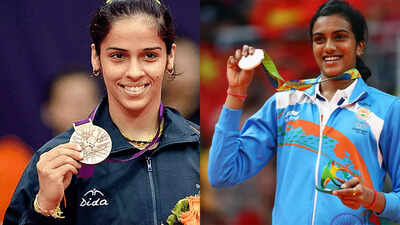
Saina Nehwal and PV Sindhu, the icons of Indian badminton.
The recent slump in results over the past two years is not merely a temporary setback, but a symptom of deeper systemic issues. The absence of promising young players to succeed the aging stars like Saina Nehwal, now 35, and the struggling PV Sindhu, 29, is particularly alarming. This is a stark contrast to the era when India clinched three women's singles medals in successive Olympics, achieved Thomas Cup glory in 2022, and secured the first Asian Games men's doubles gold in 2023.
Currently, only Satwiksairaj Rankireddy and Chirag Shetty, along with Lakshya Sen to some extent, are performing consistently. The dominance once displayed by Saina Nehwal, PV Sindhu, Kidambi Srikanth, Sai Praneeth, HS Prannoy, and the Satwik-Chirag duo seems like a distant memory.
The warning signs have been present for some time. Since HS Prannoy's Malaysia Open Super-500 title in January 2023, Indian players have struggled to win singles titles, with only the doubles pair of Satwik-Chirag managing to secure a few victories. The Sudirman Cup performance this year was particularly disappointing, with India exiting in the group stage after losses to Denmark and Indonesia.
The past decade witnessed a surge in Indian badminton. Following Saina Nehwal's Olympic bronze in 2012, PV Sindhu's emergence with a World Championships bronze in 2013 further fueled the sport's popularity. Simultaneously, Parupalli Kashyap, Kidambi Srikanth, Prannoy, and B Sai Praneeth gained prominence in the men's division. Kidambi Srikanth even ascended to the World No. 1 ranking and secured four Super Series titles in 2017.
PV Sindhu's World Championship victory in 2019 and Sai Praneeth's bronze in the same year highlighted India's growing strength in the sport. Although Srikanth reached the final of the Malaysia Masters this May, his low ranking hindered his participation in subsequent tournaments. The Satwik-Chirag pair's emergence in men's doubles, particularly at the Commonwealth Games, offered further hope. However, they too have been grappling with fitness issues recently.
The most pressing concern lies in the women's singles category. With Saina and Sindhu's careers winding down, there is a dearth of players ready to take their place. While Malvika Bansod, Aakarshi Kashyap, Unnati Hooda, Anmol Kharb, and Tanvi Patri are striving to fill the void, they are yet to reach the level of consistency and success achieved by their predecessors.
Pullela Gopichand's appointment as chief coach in 2006 marked a turning point for Indian badminton. However, the lack of a robust system to consistently produce players, unlike the Chinese or Malaysian models, has contributed to the current decline. The absence of a dedicated talent-search team and a shortage of trained coaches to nurture aspiring players have further exacerbated the problem.
The failure to identify and groom a core group of emerging players has widened the gap between the elite and the second-string. Players like Malvika, Aakarshi, and Tanvi could have benefited from a more structured training environment.
Despite the national association's claims, there is a lack of adequate support and guidance for promising junior and sub-junior players across the country. Sanjay Mishra, the secretary of the Badminton Association of India (BAI), acknowledged the setback in performance due to injuries to key players and the time required for the next generation to mature.
Mishra stated that BAI is committed to enhancing coaching, injury management, and talent development to ensure long-term excellence. He also highlighted the efforts at the National Centre of Excellence, under the guidance of Olympic medalist coach Ivan Sozonov and coach Park, to nurture the next generation of champions.
BAI's recent annual general meeting (AGM) unveiled a plan to drive the growth of badminton. However, more emphasis should be placed on grooming coaches. There is a need for categorized coaches to identify nascent talent, guide them through their formative years, and ultimately transform them into international-level players.
While BAI cannot alter past results, it can implement a proper system with a clear three-to-five-year plan to improve Indian badminton's standing. Drawing inspiration from Pullela Gopichand's successful model, a similar system should be implemented across the country. Without such a comprehensive overhaul, Indian badminton risks sliding into mediocrity.
Newer articles
Older articles
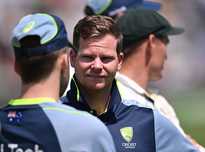 Smith Eyes Grenada Test Return After Injury Recovery
Smith Eyes Grenada Test Return After Injury Recovery
 Google Maps Boosts Navigation Precision with Fused Orientation Provider Update
Google Maps Boosts Navigation Precision with Fused Orientation Provider Update
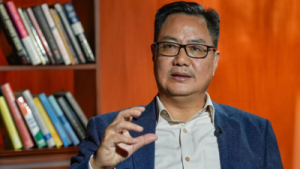 Earth Sciences Minister Rijiju Expresses Frustration Over Atos Supercomputer Delay, Jeopardizing Weather Forecast Upgrades
Earth Sciences Minister Rijiju Expresses Frustration Over Atos Supercomputer Delay, Jeopardizing Weather Forecast Upgrades
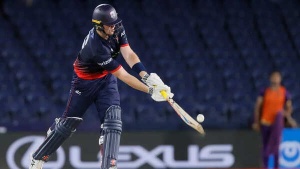 Washington Freedom Snatch Last-Ball Win Over Knight Riders in MLC Thriller; Playoff Hopes Soar
Washington Freedom Snatch Last-Ball Win Over Knight Riders in MLC Thriller; Playoff Hopes Soar
 East Africa Rift: Mantle Upwelling Drives Birth of New Ocean, Study Finds
East Africa Rift: Mantle Upwelling Drives Birth of New Ocean, Study Finds
 Colon Cancer: Don't Ignore These 5 Subtle Warning Signs
Colon Cancer: Don't Ignore These 5 Subtle Warning Signs
 Prasidh Krishna Vows to Sharpen Bowling After Costly Leeds Performance
Prasidh Krishna Vows to Sharpen Bowling After Costly Leeds Performance
 Gavaskar Urges India to Replace Thakur with Yadav for Second Test Against England
Gavaskar Urges India to Replace Thakur with Yadav for Second Test Against England
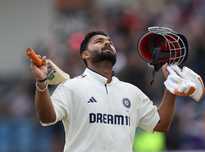 Rishabh Pant's Unconventional Batting Style Is Revolutionizing Cricket, Says Greg Chappell
Rishabh Pant's Unconventional Batting Style Is Revolutionizing Cricket, Says Greg Chappell
 Vitamin B12 Deficiency: Cardiologist Explains Symptoms, Sources, and Why You're Always Tired
Vitamin B12 Deficiency: Cardiologist Explains Symptoms, Sources, and Why You're Always Tired